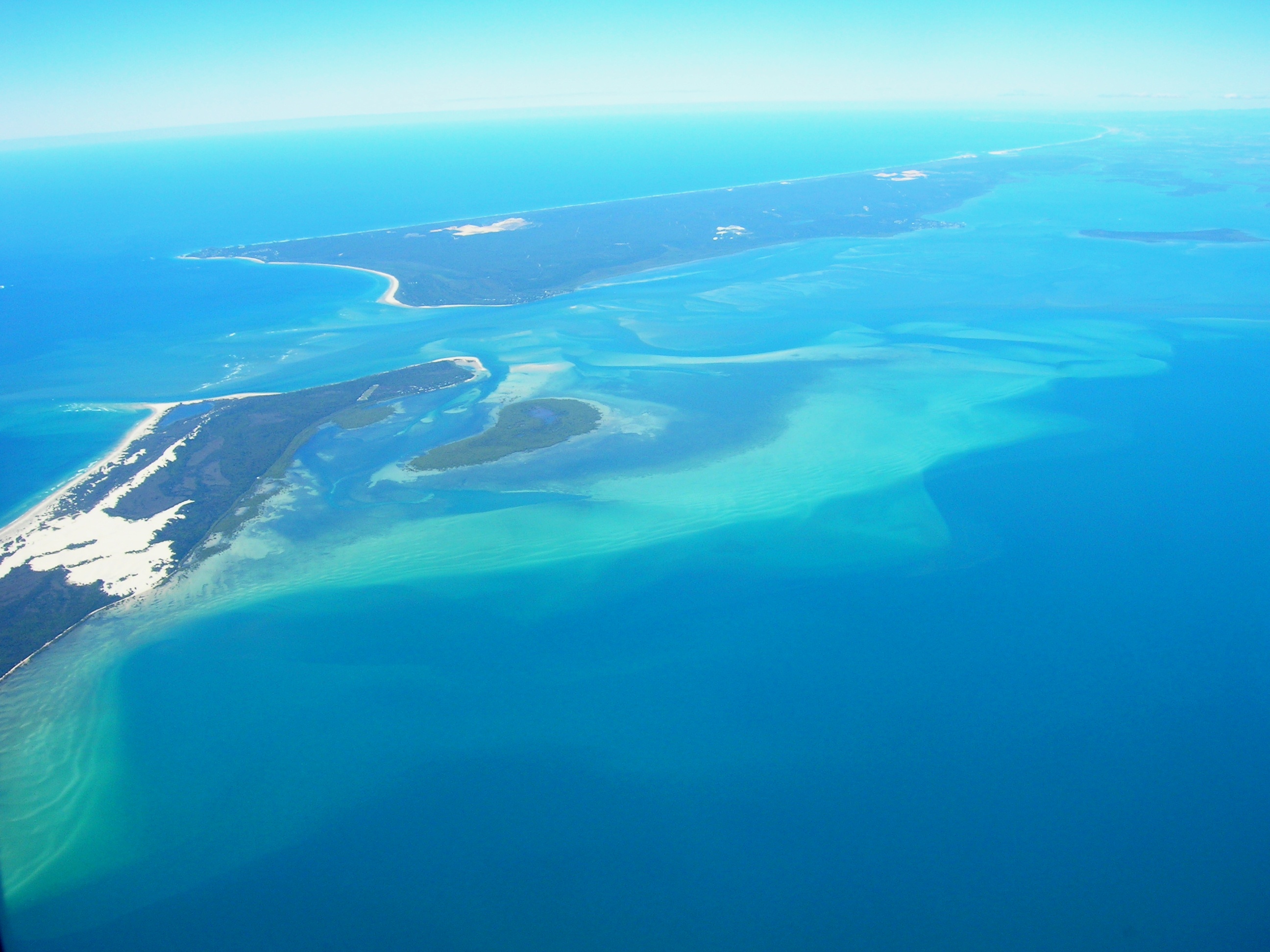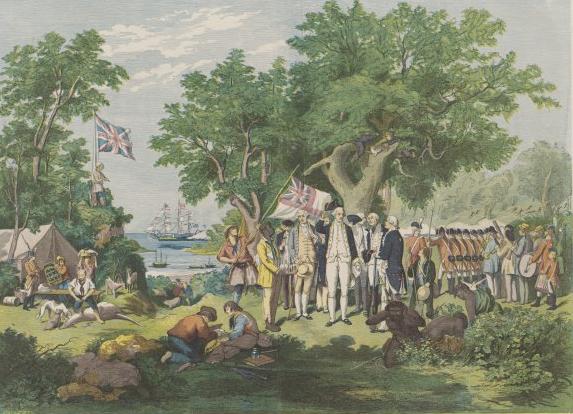|
Goenpul
The Goenpul, also written Koenpal, are an Aboriginal Australian people, one of three Quandamooka peoples, who traditionally lived on the southern part of Stradbroke Island in southern Queensland. Today their preferred term for their group is Dandrubin Gorenpul. Name In the Brisbane area tribal, the words for 'no' used by each tribe were often selected to form the appropriate ethnonym. Both ''djandai'' and ''goenpul'' used for the Goenpul reflect this principle of nomenclature. ''Djandai'' meant the language spoken by the Goenpul, while Goenpul itself was formed from the Moreton Island term for 'no', namely ''goa''. Country The Goenpul's traditional lands occupied some on southern part of Stradbroke Island. On their northern boundary were the Nunukul. As one of the three tribes constituting the Quandamooka people, the others being the Nunukul and the Ngugi, they are custodians with traditional ownership rights in Moreton Bay Moreton Bay is a bay located on the eastern co ... [...More Info...] [...Related Items...] OR: [Wikipedia] [Google] [Baidu] |
Quandamooka People
The Quandamooka people are Aboriginal Australians who live around Moreton Bay in Southeastern Queensland. They are composed of three distinct tribes, the Nunukul, the Goenpul and the Ngugi, and they live primarily on Moreton and North Stradbroke Islands, that form the eastern side of the bay. Many of them were pushed out of their lands when the English colonial government established a penal colony near there in 1824. Each group has its own language. A number of local food sources are utilised by the tribes. Name The term ''Quandamooka'' refers geographically to the southern Moreton Bay, the waters, islands and adjacent coastal areas of the mainland. The Nunukul and Goenpul tribes lived on Stradbroke Island, while the Ngugi tribe lived on Moreton Island. The Nunukul, Goenpul and Ngugi tribes together constitute the Quandamooka people. History The archaeological remains of the Moreton Bay islands were studied intensively by V.V. Ponosov in the mid 1960s, and indigenous occup ... [...More Info...] [...Related Items...] OR: [Wikipedia] [Google] [Baidu] |
Stradbroke Island
Stradbroke Island, also known as Minjerribah, was a large sand island that formed much of the eastern side of Moreton Bay near Brisbane, Queensland until the late 19th century. Today the island is split into two islands: North Stradbroke Island and South Stradbroke Island, separated by the Jumpinpin Channel. In 2009 as part of the Q150 celebrations, the Stradbroke Island was announced as one of the Q150 Icons of Queensland for its role as a "Natural attraction". Indigenous history Archaeological evidence suggests the Quandamooka, an Aboriginal Australian people, lived on the island for at least 21,000 years prior to European settlement. It was also a traditional meeting place of Quandamooka peoples such as the Nunukul and Goenpul. A 1964 survey found 121 pre-European dwelling sites with evidence of substantial wooden huts. Jandai (also known as Janday, Jandewal, Djendewal, Jundai, Goenpul and Jandawal) is one of the Aboriginal languages of the Moreton Bay Region i ... [...More Info...] [...Related Items...] OR: [Wikipedia] [Google] [Baidu] |
Nunukul
The Nunukul, also spelt Noonuccal and known also as Moondjan are an Aboriginal Australian people, one of three Quandamooka peoples, who traditionally lived on Minjerribah, in Moreton Bay Area and in mainland Brisbane regions. Language The Nunukul spoke Mundjan (also known as Nunukan), a variety of Yagera that had close affinities with the dialects of Turrbal and Jandai, though some prefer to use Janday as the generic term for this dialect cluster. Unlike the other dialects, it used ''mundjan'' instead of the standard dialect word ''jandai'' for the concept of 'no', and this was a marker of their tribal difference. Social groups On North Stradbroke Island and the mainland opposite there were 2 or perhaps 3 clan divisions of the Quandamooka: the Nunukul, Goenpul Koobeenpul. Steele suggests that the Goenpul and the Koobeenpul may be one and the same clan, as the similarity in the names suggests. History In the early period of contact with Europeans, the Nunukul took in castaway ... [...More Info...] [...Related Items...] OR: [Wikipedia] [Google] [Baidu] |
Moreton Bay
Moreton Bay is a bay located on the eastern coast of Australia from central Brisbane, Queensland. It is one of Queensland's most important coastal resources. The waters of Moreton Bay are a popular destination for recreational anglers and are used by commercial operators who provide seafood to market. The Port of Brisbane coordinates large traffic along the shipping channel which crosses the northern section of the bay. The bay serves as a safe approach to the airport and reduces noise pollution over the city to the west of the runway. A number of barge, ferry and water-taxi services also travel over the bay. Moreton Bay was the site of conflict between the Quandamooka people and early European settlers. It contains environmentally significant habitats and large areas of sandbanks. The bay is the only place in Australia where dugong gather into herds. Many parts of the mainland foreshore and southern islands are settled. The waters of Moreton Bay are relatively calm, bein ... [...More Info...] [...Related Items...] OR: [Wikipedia] [Google] [Baidu] |
Aboriginal Australian
Aboriginal Australians are the various Indigenous peoples of the Mainland Australia, Australian mainland and many of its islands, such as Tasmania, Fraser Island, Hinchinbrook Island, the Tiwi Islands, and Groote Eylandt, but excluding the Torres Strait Islands. The term Indigenous Australians refers to Aboriginal Australians and Torres Strait Islanders collectively. It is generally used when both groups are included in the topic being addressed. Torres Strait Islanders are ethnically and culturally distinct, despite extensive cultural exchange with some of the Aboriginal groups. The Torres Strait Islands are mostly part of Queensland but have a Torres Strait Regional Authority, separate governmental status. Aboriginal Australians comprise List of Aboriginal Australian group names, many distinct peoples who have developed across Australia for over 50,000 years. These peoples have a broadly shared, though complex, genetic history, but only in the last 200 years have they been ... [...More Info...] [...Related Items...] OR: [Wikipedia] [Google] [Baidu] |
Queensland
) , nickname = Sunshine State , image_map = Queensland in Australia.svg , map_caption = Location of Queensland in Australia , subdivision_type = Country , subdivision_name = Australia , established_title = Before federation , established_date = Colony of Queensland , established_title2 = Separation from New South Wales , established_date2 = 6 June 1859 , established_title3 = Federation of Australia, Federation , established_date3 = 1 January 1901 , named_for = Queen Victoria , demonym = , capital = Brisbane , largest_city = capital , coordinates = , admin_center_type = Administration , admin_center = Local government areas of Queensland, 77 local government areas , leader_title1 = Monarchy of Australia, Monarch , leader_name1 = Charles III , leader_title2 = Governor of Queensland, Governor , leader_name2 = Jeannette Young , leader_title3 = Premier of Queensland, Premier , leader_name3 = Annastacia Palaszczuk (Australian Labor Party (Queensland Branch), AL ... [...More Info...] [...Related Items...] OR: [Wikipedia] [Google] [Baidu] |
Ethnonym
An ethnonym () is a name applied to a given ethnic group. Ethnonyms can be divided into two categories: exonyms (whose name of the ethnic group has been created by another group of people) and autonyms, or endonyms (whose name is created and used by the ethnic group itself). As an example, the largest ethnic group in Germany is Germans. The ethnonym ''Germans'' is a Latin-derived exonym used in the English language. Conversely, the Germans call themselves the , an endonym. The German people are identified by a variety of exonyms across Europe, such as (French), (Italian), (Swedish) and (Polish). As a sub-field of anthroponymy, the study of ethnonyms is called ethnonymy or ethnonymics. Ethnonyms should not be confused with demonyms, distinctive terms that designate all people related to a specific territory, regardless of any ethnic, religious, linguistic or some other distinctions that may exist within the population of that territory. Variations Numerous ethnonyms can ap ... [...More Info...] [...Related Items...] OR: [Wikipedia] [Google] [Baidu] |
Ngugi People
The Ngugi are an Aboriginal Australian people, one of three Quandamooka peoples, and the traditional inhabitants of Moreton Island. Language The Ngugi language was called ''guwar'', a term that, by extension served as one of the names for the people, reflects their word for "no" (''gowarliosislipotinoionalop''). It was mutually intelligible with the other Moreton bay languages: Tom Petrie, who had mastered the Brisbane area Turrbal language could, according to his daughter's reminiscences, understand the speech of Ngugi people from the island. According to Anthony Jefferies, Guwar is a variety of Bundjalung, the population being a residue of speakers of that language who, when the rest of the Bundjalung were forced south as a result of the expansion of the incoming Yugara, much of whose terminology was then adopted into Guwar. Country The Ngugi lands covered the entirety of Moreton Island, in their language ''Mulganpin'' (Moolgunpin) and covered some . A legend explains the ... [...More Info...] [...Related Items...] OR: [Wikipedia] [Google] [Baidu] |
St Helena Island National Park
St Helena Island is a heritage-listed island in Queensland, Australia, east of Brisbane and east of the mouth of the Brisbane River in Moreton Bay. Originally used as a prison, it is now a national park. Local Australian Aboriginals called the island Noogoon but it was renamed St Helena after an Aboriginal man named Napoleon was exiled there in 1827. The island is visible from the mainland, particularly the suburbs of Wynnum, Manly and Lota. It has its own permanent water supply, a spring in the centre of the island. Many migratory birds use the island as a watering hole; it forms part of the Moreton Bay and Pumicestone Passage Important Bird Area, so identified by BirdLife International because it supports large numbers of migratory waders, or shorebirds. History In the 19th century St Helena Island was a quarantine station which became one of the most profitable prisons in Queensland history. The island was used to house prisoners and staff for 65 years. Many of those ... [...More Info...] [...Related Items...] OR: [Wikipedia] [Google] [Baidu] |
Aboriginal Peoples Of Queensland
Aborigine, aborigine or aboriginal may refer to: *Aborigines (mythology), in Roman mythology * Indigenous peoples, general term for ethnic groups who are the earliest known inhabitants of an area *One of several groups of indigenous peoples, see List of indigenous peoples, including: **Aboriginal Australians (Aborigine is an archaic term that is considered offensive) ** Indigenous peoples in Canada, also known as Aboriginal Canadians ** Orang Asli or Malayan aborigines **Taiwanese indigenous peoples, formerly known as Taiwanese aborigines See also * * *Australian Aboriginal English *Australian Aboriginal identity *Aboriginal English in Canada Indigenous English, also known as First Nations English, refers to varieties of English used by the Indigenous peoples of Canada. They are outwardly similar to standard Canadian English from the perspective of a non-Canadian. However, they d ... * First Nations (other) {{disambiguation ... [...More Info...] [...Related Items...] OR: [Wikipedia] [Google] [Baidu] |





